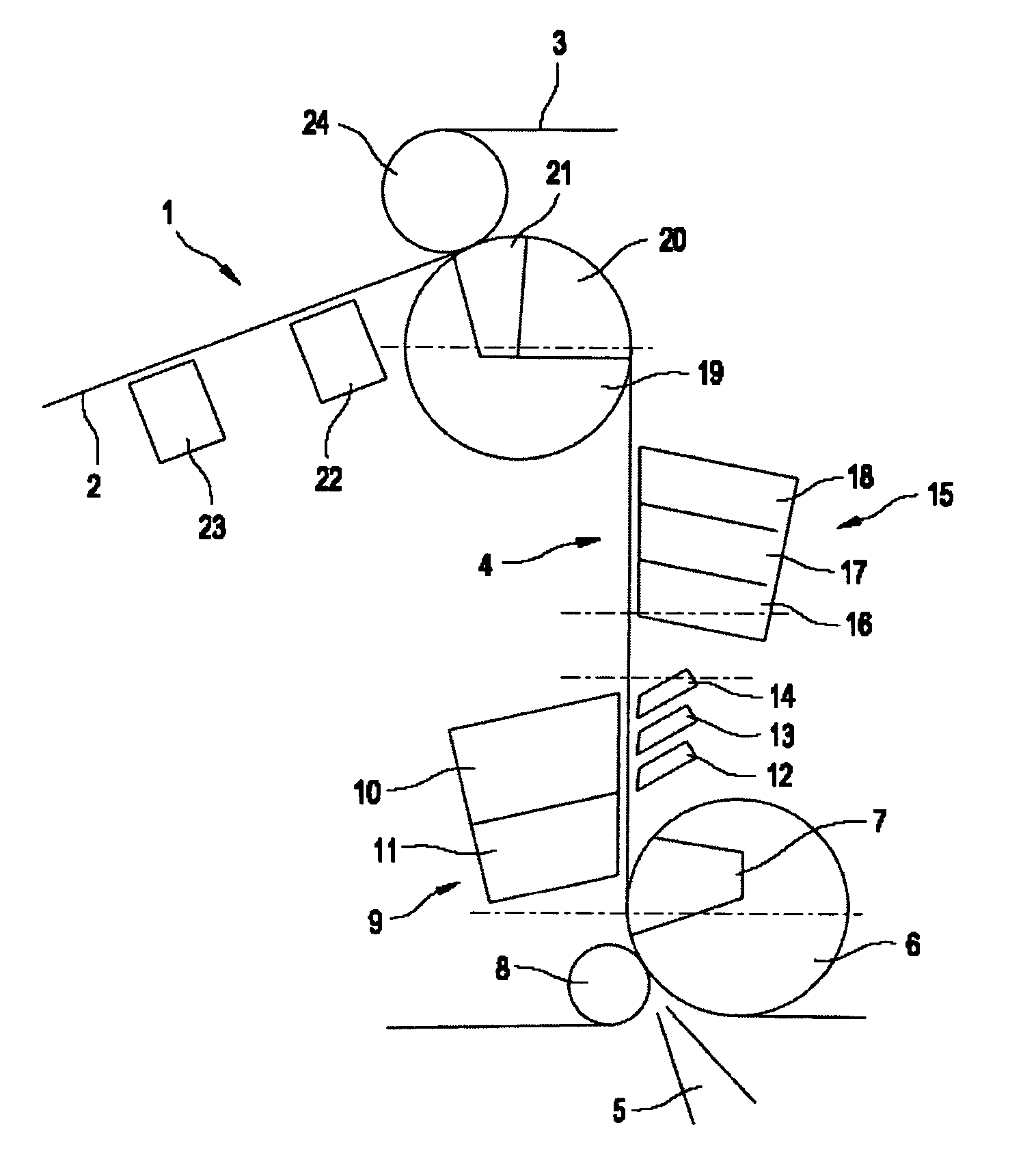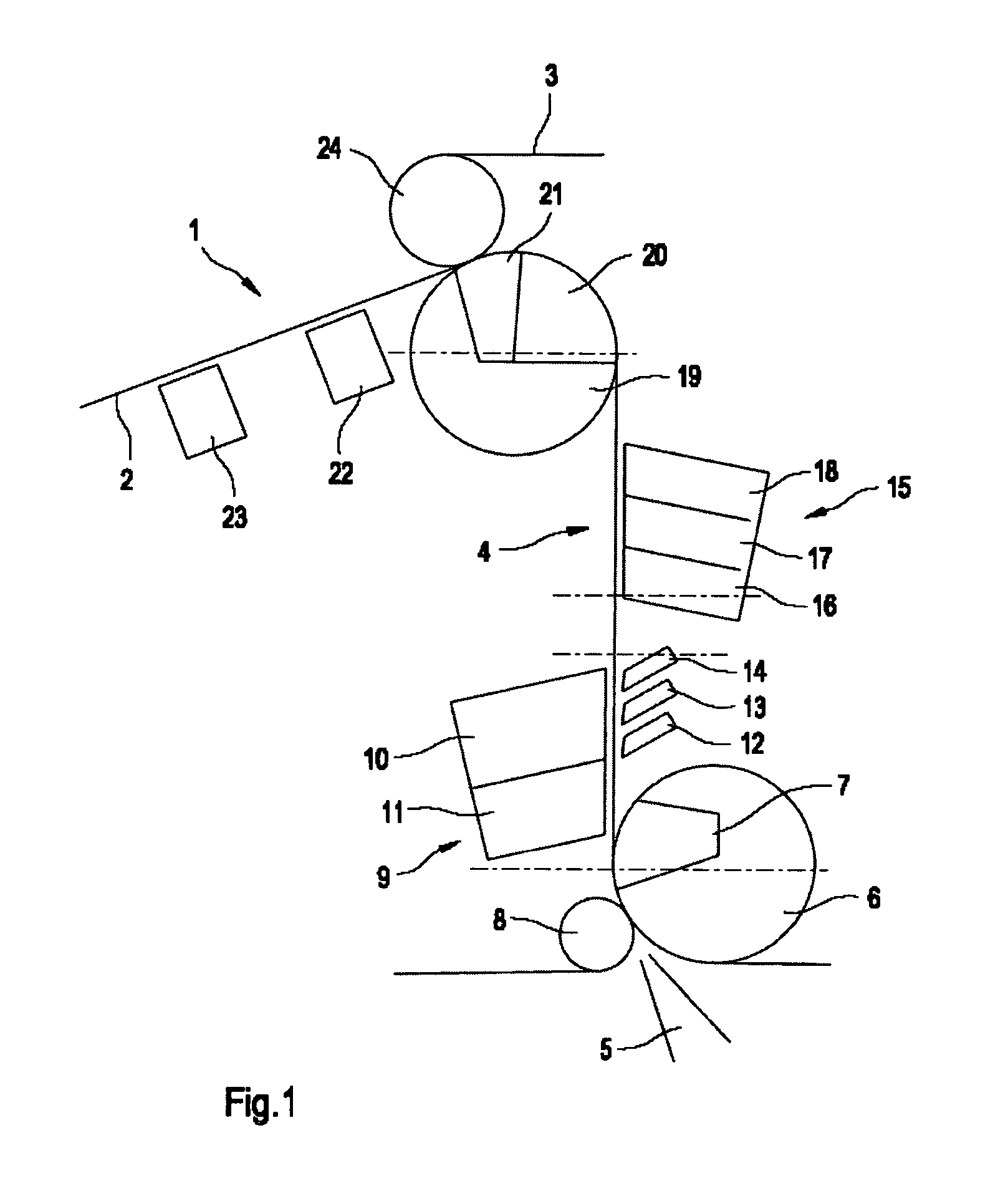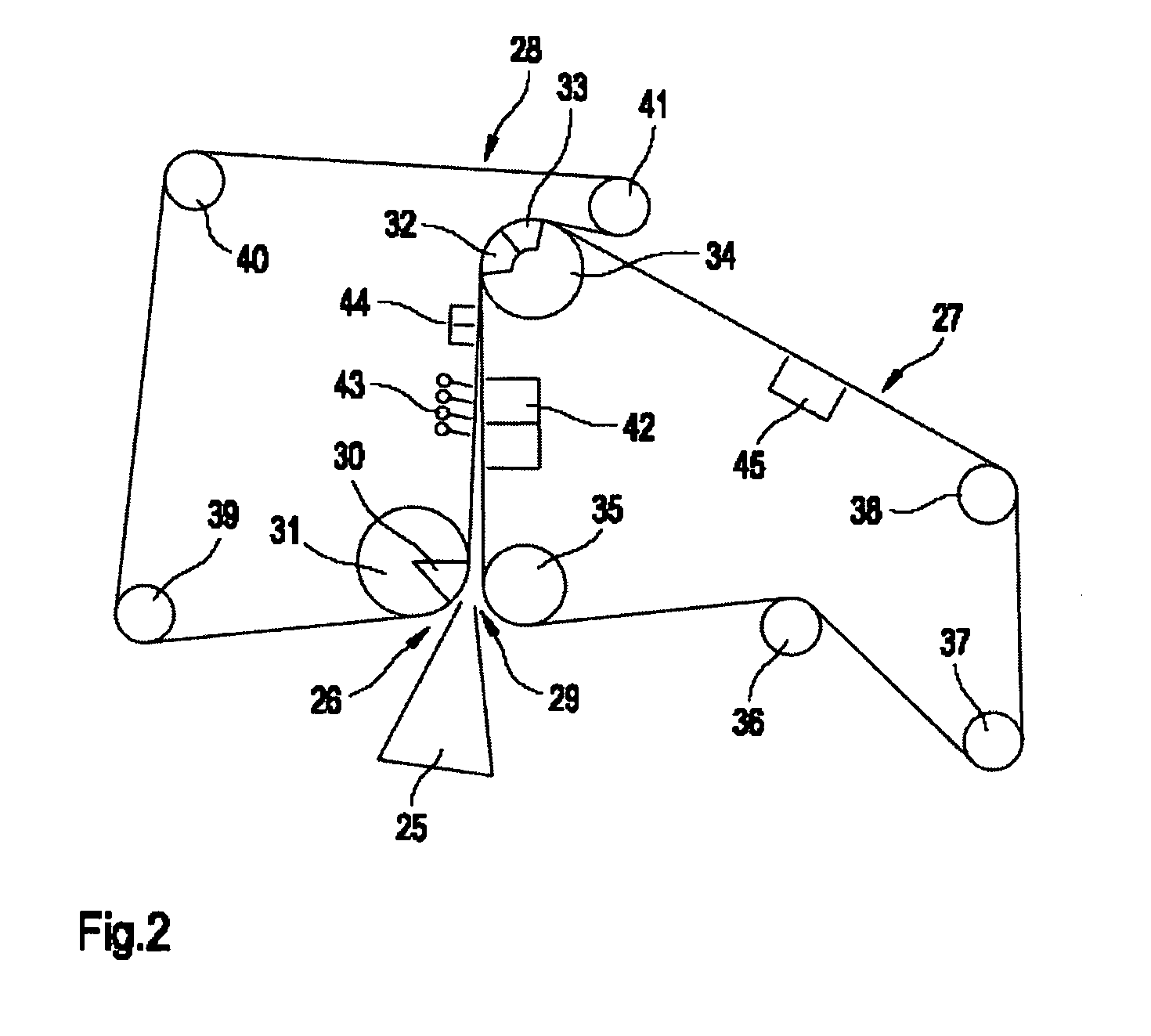Machine for producing a fibrous web
a machine and fibrous web technology, applied in the wet end of the machine, textiles and papermaking, papermaking, etc., can solve the problems of soiling the fibrous web, insufficient printing quality, and inability to run the paper web
- Summary
- Abstract
- Description
- Claims
- Application Information
AI Technical Summary
Benefits of technology
Problems solved by technology
Method used
Image
Examples
Embodiment Construction
[0026] The particulars shown herein are by way of example and for purposes of illustrative discussion of the embodiments of the present invention only and are presented in the cause of providing what is believed to be the most useful and readily understood description of the principles and conceptual aspects of the present invention. In this regard, no attempt is made to show structural details of the present invention in more detail than is necessary for the fundamental understanding of the present invention, the description taken with the drawings making apparent to those skilled in the art how the several forms of the present invention may be embodied in practice.
[0027] A twin-wire former 1 (FIG. 1) comprises a carrier fabric 2 and a top fabric 3, between which, in a twin-wire section 4, a fibrous web is produced from a fibrous suspension supplied in a headbox 5. The top fabric 3 wraps around a forming roll 6 having a suction zone 7, while the carrier fabric 2 is guided over an ...
PUM
 Login to View More
Login to View More Abstract
Description
Claims
Application Information
 Login to View More
Login to View More - R&D
- Intellectual Property
- Life Sciences
- Materials
- Tech Scout
- Unparalleled Data Quality
- Higher Quality Content
- 60% Fewer Hallucinations
Browse by: Latest US Patents, China's latest patents, Technical Efficacy Thesaurus, Application Domain, Technology Topic, Popular Technical Reports.
© 2025 PatSnap. All rights reserved.Legal|Privacy policy|Modern Slavery Act Transparency Statement|Sitemap|About US| Contact US: help@patsnap.com



